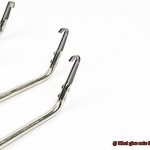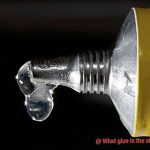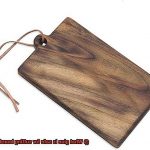Tired of glue that promises strength but turns out to be as brittle as a potato chip?
Been there, done that. Imagine this: You’re knee-deep in a project that demands a glue that’s both tough and bendy.
Maybe you’re fixing up a busted toy, getting creative with jewelry making, or piecing together an intricate model. No matter the task at hand, you need a glue that won’t let you down.
That’s why I’ve made it my mission to uncover the ultimate adhesive that combines strength and flexibility in perfect harmony. In this blog post, we’ll dive into the world of glues that can truly stick like superheroes while staying limber like acrobats.
Say farewell to cracked and feeble bonds as we reveal the secret recipe for achieving an unbreakable yet supple connection.
Epoxy Resin: The go-to adhesive for strength and flexibility
Contents
- 1 Epoxy Resin: The go-to adhesive for strength and flexibility
- 2 Super Glue: A reliable option for moderate flexibility
- 3 Silicone Adhesives: The epitome of flexibility in glues
- 4 Specialized Fabric Glues: Maintaining flexibility in textile bonding
- 5 Factors to consider when choosing a strong and flexible glue
- 6 Applications of strong and flexible glues in construction and woodworking
- 7 Strong and flexible glues for automotive repairs and maintenance
- 8 Benefits of using strong and flexible glues in plumbing and electrical work
When it comes to adhesives, strength and flexibility are non-negotiable qualities. Whether you’re constructing a towering skyscraper, repairing a beloved automobile, building an aircraft that defies gravity, or voyaging across treacherous waters, epoxy resin emerges as the ultimate adhesive of choice. With its exceptional properties and versatility, it has become the go-to solution in a multitude of industries. In this article, we will delve into the reasons why epoxy resin stands out as the preferred adhesive for achieving both unparalleled strength and remarkable flexibility.
Exceptional Bonding Strength:
Epoxy resin is not your average glue. Composed of two components, a resin and a hardener expertly mixed in precise ratios to activate its adhesive properties, epoxy forms an extraordinarily strong bond. Once cured, it boasts unbeatable durability, capable of withstanding heavy loads without cracking or breaking. This makes it ideal for high-stakes applications where unyielding strength is paramount. From construction projects fusing metal, wood, plastic, glass, and ceramics together to create formidable structures, to bonding critical components in aircraft that defy gravity, epoxy resin delivers unmatched bonding strength.
Flexibility and Vibration Absorption:
What truly sets epoxy resin apart from its counterparts is its unique ability to retain flexibility even after curing. This characteristic allows it to absorb vibrations and movements without compromising the integrity of its bond. In the automotive industry, where constant vibrations threaten the stability of interconnected parts, epoxy resin plays a pivotal role in securing them firmly in place. Moreover, its flexibility makes it an excellent choice for filling gaps or cracks in structures where movement is expected. This adaptability ensures that the bond remains intact, regardless of external stresses.
Versatility across Industries:
Epoxy resin’s exceptional properties find application across a myriad of industries. In the construction realm, it is relied upon for structural repairs, laminating surfaces, and creating robust bonds between diverse materials. In the automotive sector, epoxy resin is a trusted ally for repairing body panels, securing interior components, and bonding fiberglass parts together. In the aerospace and marine industries, where durability under extreme conditions is vital, epoxy resin forms resilient bonds capable of withstanding temperature fluctuations, water exposure, and chemical resistance. Its versatility and strength make it an indispensable adhesive in countless applications.
Customizable and Enhanced Properties:
Epoxy resin can be tailored to meet the specific requirements of any project. By adding tint or incorporating additives, its color or properties can be modified accordingly. For instance, additives can be blended to increase flexibility, enhance UV resistance, or impart flame retardancy, making epoxy resin suitable for a wide range of demanding tasks. This adaptability ensures that epoxy resin delivers optimal performance in every context.
Super Glue: A reliable option for moderate flexibility
Super glue, also known as cyanoacrylate adhesive, is a versatile bonding solution that strikes a perfect balance between strength and flexibility. With its ability to form robust bonds between various materials, super glue has become a go-to choice for both DIY enthusiasts and professionals. In this article, we will explore how super glue effectively addresses the need for moderate flexibility, ensuring secure and durable bonds even in dynamic environments.
Understanding Super Glue’s Flexibility:
Super glue offers a moderate level of flexibility, allowing for slight movement without compromising the adhesive bond. This feature proves invaluable when working with materials that experience shifts or vibrations, such as electronic devices or lightweight structures. By accommodating these movements, super glue prevents cracks and detachment under stress, ensuring long-lasting durability.
The Limitations of Super Glue:
While super glue provides reliable flexibility, it does have its limitations. It may not be suitable for applications requiring high flexibility or extreme bending or stretching. In such cases, specialized adhesives like epoxy or polyurethane-based glues offer better alternatives. To ensure optimal bonding performance, it is essential to assess the specific requirements of your project before selecting an adhesive.
Selecting the Right Adhesive:
To make an informed decision about the right adhesive for your project, consider the following factors:
- Materials: Determine the materials you need to bond and ensure compatibility with super glue.
- Flexibility Requirement: Assess the level of flexibility needed in your application. If moderate flexibility is sufficient, super glue is an excellent option.
- Environmental Factors: Consider the environmental conditions your bonded materials may face, such as temperature fluctuations, humidity, or chemical exposure. Choose an adhesive that can withstand these conditions.
- Application Method: Evaluate the ease of application and curing time to ensure efficient bonding.
Silicone Adhesives: The epitome of flexibility in glues
When it comes to the world of glues, silicone adhesives stand out as the true superheroes. With an exceptional combination of strength and flexibility, they have become the go-to choice for a wide range of applications. So what makes silicone adhesives the epitome of flexibility in glues? Let’s dive into their remarkable qualities.
First and foremost, silicone adhesives are renowned for their unrivaled resistance to extreme temperatures. From freezing cold to scorching heat, these adhesives fear no thermodynamic challenge. With a temperature range spanning from a bone-chilling -40°C to a blistering 200°C, they are perfectly suited for use in the most demanding environments. Whether you’re working on an outdoor project exposed to the elements or dealing with high-temperature machinery, silicone adhesives have got your back.
But their talents don’t stop at temperature resistance. Silicone adhesives also exhibit outstanding resilience against moisture, chemicals, and even the unrelenting assault of UV radiation. This makes them an ideal choice for outdoor applications where exposure to the elements is a constant concern. Whether it’s rain pouring down, relentless sunlight beating down, or harsh chemicals corroding away, silicone adhesives will stand strong.
Yet what truly sets silicone adhesives apart is their incredible flexibility. They possess a remarkable ability to withstand significant movement without compromising their formidable bonding strength. This characteristic makes them perfect for applications where expansion and contraction are constant factors, such as in the automotive or construction industries. Be it vibrations from a car engine or structural movements in a building, silicone adhesives ensure that everything stays securely bonded.
The versatility of silicone adhesives extends beyond their impressive properties. They can bond various materials such as metal, glass, ceramics, plastics, and rubber, making them indispensable across industries ranging from electronics and aerospace to automotive, construction, and medical devices.
When it comes to options, silicone adhesives offer a variety of forms to suit different needs and preferences. Whether you prefer gels, sealants, pastes, or tapes, there is a silicone adhesive form that will meet your specific requirements.
To achieve optimal adhesion with silicone adhesives, it is crucial to prepare the surfaces properly. Ensuring that the surfaces to be bonded are clean and free from contaminants is essential. Additionally, following the manufacturer’s instructions regarding curing time and application methods will help you achieve the best results.
Specialized Fabric Glues: Maintaining flexibility in textile bonding
When it comes to bonding fabrics together, we all want a glue that is not only strong but also flexible. After all, who wants to wear stiff and uncomfortable fabrics? Luckily, there are specialized fabric glues that are formulated to maintain flexibility while providing a durable bond. In this blog post, we will dive into the fascinating world of fabric glues and explore their secrets to keeping your textiles flexible and comfortable.
The Importance of Flexibility:
Flexibility is absolutely crucial when it comes to fabric bonding. Fabrics need to move and stretch with our bodies, so it’s essential that the adhesive used can withstand these movements without cracking or breaking. Imagine wearing a dress that restricts your every move – not a pleasant thought, right? Thankfully, fabric glues are here to save the day.
Formulation Secrets:
How do fabric glues maintain flexibility? It all starts with the choice of adhesive. Unlike regular craft glue or super glue that dries stiff and rigid, fabric glues are formulated with special flexible polymers. These polymers allow the adhesive to move and stretch along with the fabric, ensuring that the bond remains intact even during your wildest dance moves on the dance floor.
Superpowers of Additives:
Some fabric glues also contain secret additives that take their flexibility to the next level. Elastomers or plasticizers are often added to increase the elasticity of the adhesive and prevent it from becoming brittle over time. This means that your fabric bond will stay strong and flexible, even after multiple washes or years of use.
Choosing the Right Glue:
When selecting a specialized fabric glue, it’s important to consider the specific requirements of your project. Different fabrics may require different types of adhesives, so always read product labels carefully. Here are a few tips to keep in mind:
- Know your fabric: Some glues work better on natural fibers like cotton or linen, while others are more suited for synthetic fabrics like polyester or nylon. Understanding the composition of your fabric will help you choose the right adhesive.
- Test it out: Before applying the glue, always test a small, inconspicuous area of your fabric to ensure compatibility and desired results. This will save you from any unpleasant surprises.
Factors to consider when choosing a strong and flexible glue
When it comes to tackling a bonding project, the glue you choose can make or break your creation. From fixing a wobbly chair leg to crafting an awe-inspiring DIY masterpiece, the strength and flexibility of your glue are paramount. In this comprehensive guide, we will explore the key factors to consider when selecting a glue that is both strong and flexible. By mastering these factors, you can ensure that your projects stand the test of time and withstand any challenge that comes their way.
Bond Strength:
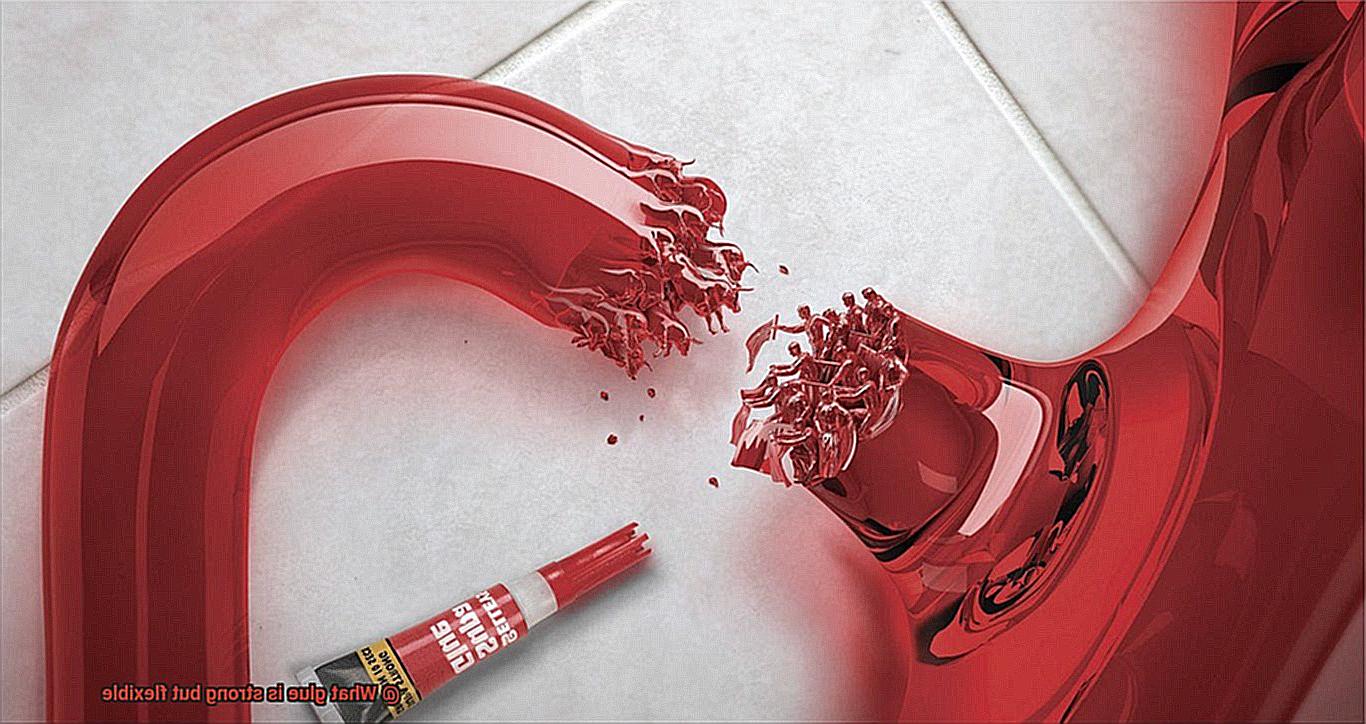
The first factor to evaluate is the bond strength provided by the glue. You need a glue capable of creating a robust and enduring bond between different materials, such as wood, metal, plastic, or fabric. Look for glues with exceptional tensile and shear strength, able to withstand stress and pressure without weakening. A strong bond guarantees that your project stays intact, no matter what life throws at it.
Flexibility:
In addition to strength, flexibility is an essential quality for the perfect glue. Flexible glues have the remarkable ability to adapt to movement and vibrations without cracking or becoming brittle. This characteristic proves crucial when bonding materials prone to expansion and contraction, such as rubber or leather. Opting for a flexible glue allows for natural movement without compromising the bond’s integrity.
Compatibility:
Consider the compatibility of the glue with the materials you are working with. Different glues are formulated for specific surfaces, such as porous woods or delicate fabrics, while others excel on non-porous materials like glass or metal. It is imperative to ensure that the glue you choose is compatible with both materials you intend to bond together and any environmental conditions they may encounter.
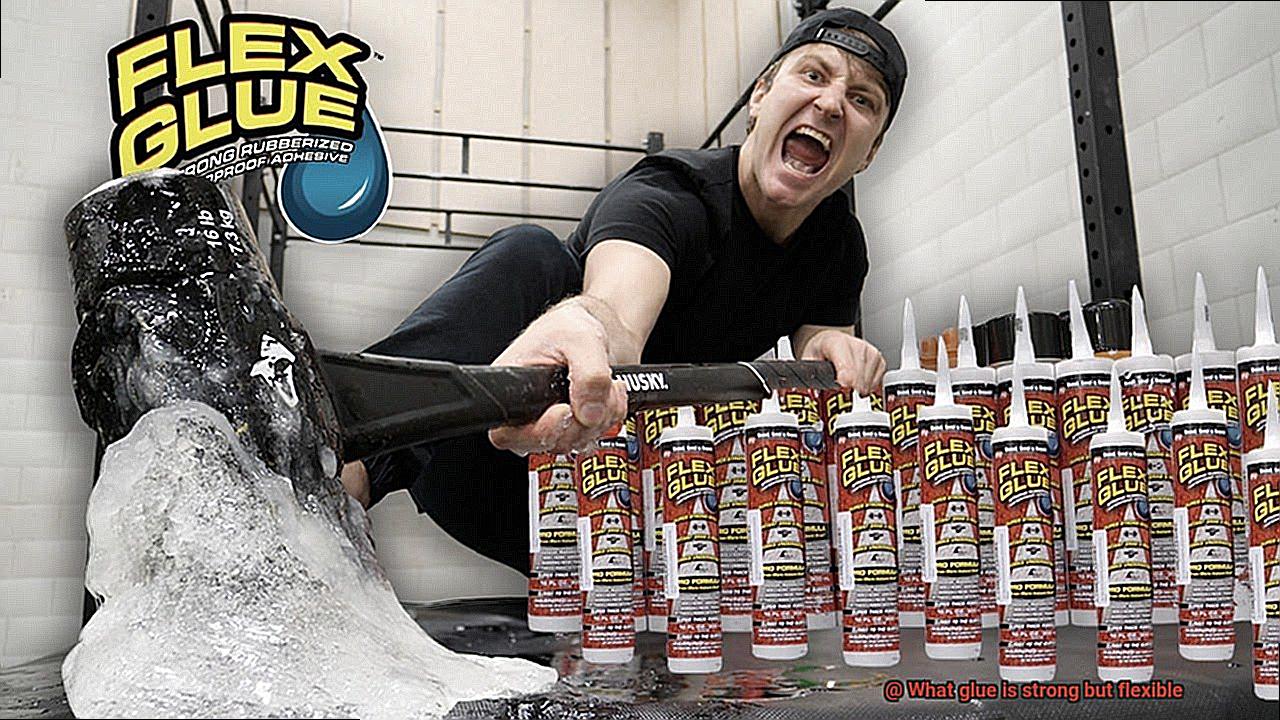
Drying Time:
The drying time of the glue plays a significant role in your project’s success. Some glues dry rapidly, while others require longer curing times. Take into account the urgency of your project and select a glue that aligns with your timeline. Additionally, note that some glues may require clamping or pressure during drying to achieve optimal bond strength.
Temperature Resistance:
If your bonded materials will be exposed to extreme temperatures, it is crucial to choose a glue that offers temperature resistance. High or low temperatures can cause certain glues to lose their strength or flexibility, leading to bond failure. Seek out a glue that can withstand the temperature range required by your project, ensuring that the bond remains unyielding regardless of the environment.
Application Method:
Consider the application method that best suits your project and personal preference. Glues come in various forms, ranging from liquids and gels to pastes and tapes. Some glues may require specific application techniques, such as even spreading or brush usage, while others may offer convenience for precise or hard-to-reach areas. The ease of application plays a significant role in achieving success in your bonding endeavor.
Applications of strong and flexible glues in construction and woodworking
In the world of construction and woodworking, we often appreciate the craftsmanship and beauty of the final product. But have you ever stopped to consider the unsung heroes that hold it all together? Enter strong and flexible glues – the vital adhesive that ensures the integrity and longevity of our creations. Let’s delve into the fascinating world of glue and explore its diverse applications in various aspects of construction and woodworking.
Bonding Structural Components:
Strong and flexible glues are the backbone of any construction project. They excel at bonding structural components such as beams, columns, and joints. With their remarkable strength and flexibility, they ensure that your structure remains stable and durable, even under heavy loads or movements.
Wooden Flooring:
Say goodbye to squeaky wooden floors. Strong and flexible glues come to the rescue by securely attaching wooden planks to the subfloor. This eliminates any movement or noise over time, giving you a solid and silent foundation to walk upon.
Furniture Assembly:
Whether you’re assembling a table, chair, or cabinet, strong and flexible glues are your best friends. They effectively bond different types of wood, including solid wood, plywood, and veneers. This ensures that your furniture remains sturdy and can withstand daily use without any loosening or separation of joints.
Cabinet and Window Construction:
Cabinets and windows are essential elements of any home or office space. Strong and flexible glues play a vital role in their assembly, providing a reliable bond between different components. This ensures that your cabinets remain intact despite temperature fluctuations or changes in humidity, while windows stay secure against external elements.
Laminating Projects:
Prepare to be amazed by beautifully laminated wooden surfaces. Strong and flexible glues excel at bonding thin layers of wood together to create sturdy and flexible panels. This technique is commonly used in projects like tabletops, countertops, and decorative pieces, resulting in a stunning and durable finish.
Repair Work:
Wooden structures and furniture are prone to wear and tear over time. Strong and flexible glues come to the rescue by effectively repairing broken pieces or reinforcing weak areas. With their reliable bonding capabilities, they restore the integrity and functionality of your cherished items, giving them a new lease on life.
Outdoor Construction:
When it comes to outdoor construction, durability is paramount. Strong and flexible glues are up to the challenge, as they can withstand exposure to moisture, UV rays, and temperature variations. This makes them ideal for bonding materials such as outdoor decking, pergolas, and fences – ensuring that your outdoor creations stand strong against the elements.
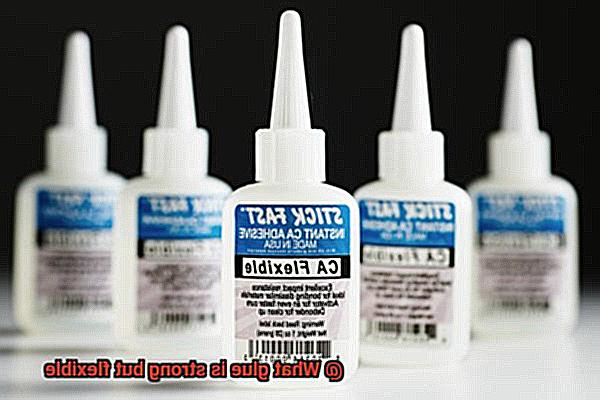
Strong and flexible glues for automotive repairs and maintenance
In the world of automotive repairs and maintenance, the glue you choose can make all the difference. It’s not just about sticking things together – it’s about finding a glue that is both strong and flexible, capable of withstanding the demands of the road. So, what should you look for when it comes to selecting the perfect adhesive for your automotive needs? Let’s delve into the fascinating world of strong and flexible glues for automotive repairs and maintenance.
First and foremost, consider the materials you’ll be working with. Vehicles are made up of a variety of materials, each with its own unique properties. Metal, plastic, rubber, and glass all require specific types of adhesive for bonding. For example, epoxy glues have an incredible ability to bond metal and plastic, while polyurethane adhesives excel in bonding materials with different expansion rates.
Next, think about the specific tasks you’ll be undertaking. Automotive repairs can range from attaching body panels to fixing interior trims. Each task requires a glue with specific characteristics. Cyanoacrylate adhesives, also known as superglue, are perfect for repairing flexible plastic parts. On the other hand, silicone adhesives are ideal for engine components or exhaust systems due to their resistance to extreme temperatures.
Lastly, don’t forget to consider the environmental conditions your vehicle will face. Temperature changes, vibrations, chemicals, and moisture can all wreak havoc on your repairs if you haven’t chosen the right glue. That’s where polyurethane adhesives and silicone adhesives shine – they’re known for their exceptional resistance to these environmental factors.
Also Read: What is the Best Moldable Glue?
Benefits of using strong and flexible glues in plumbing and electrical work
Fasten your seatbelts, because we’re about to explore a smooth ride filled with incredible benefits.
First and foremost, let’s discuss why strong and flexible glues are essential in these areas. Plumbing and electrical systems face constant movement, vibrations, and exposure to various environmental factors. Therefore, it’s crucial to use glues that can handle these challenges and provide a reliable bond. And that’s where our heroes come into play.
One significant advantage of utilizing strong and flexible glues is their ability to withstand pressure. In plumbing systems, pipes often encounter high water pressure, which can cause weaker glues to fail over time. However, with our super glue, the joints between pipes remain secure even under intense pressure. No leaks or bursts here.
But wait, there’s more. These glues also possess incredible resistance to temperature changes. Consider the extreme weather conditions that plumbing and electrical systems endure. Well, fear not. Our glues can handle the scorching heat or bone-chilling cold without losing their powerful bonding properties. So your connections stay intact, preventing any disruptions or malfunctions in the system.
Flexibility is another superpower of these glues. They can handle movements and vibrations like true professionals. Is water flow creating vibrations in your plumbing system? No worries. Flexible glues absorb those movements and keep everything securely in place. And in electrical work, where equipment or wiring may experience vibrations or movements, our strong and flexible glues ensure a connection that won’t let you down.
But wait, there’s even more. These glues offer excellent adhesion properties too. They can bond different materials commonly found in plumbing and electrical systems, such as PVC pipes or copper pipes. Talk about versatility. You can use them for various projects, making your life easier.
And here’s the cherry on top – using strong and flexible glues in plumbing and electrical work can save you time and money. These glues provide a long-lasting bond, so you won’t need frequent repairs or replacements. Furthermore, their durability ensures the reliability of your systems, minimizing the risk of costly damages caused by leaks or malfunctions.
So there you have it, folks. The benefits of using strong and flexible glues in plumbing and electrical work are endless. They can withstand pressure, temperature changes, and movements like true champions. Their adhesion properties and versatility make them the go-to choice for professionals. And most importantly, they save you time and money in the long run. It’s a win-win situation.
Next time you’re working on your plumbing or electrical system, remember to grab some strong and flexible glue. Trust me, you won’t be disappointed.
e2NxidtPhlY” >


